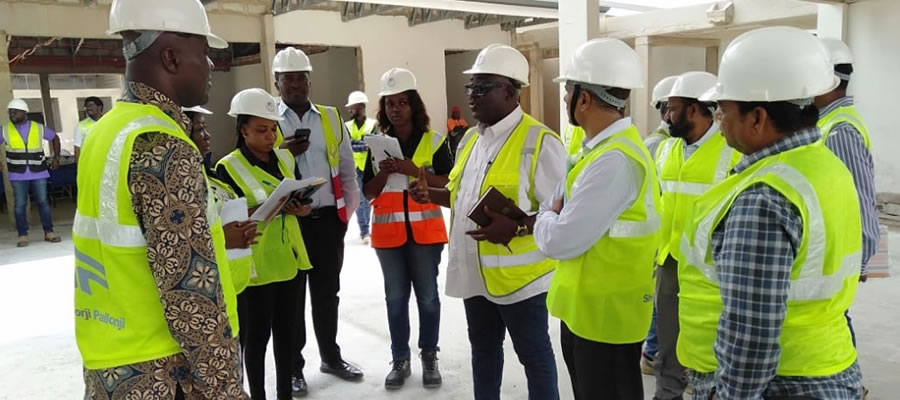

Bathing and Toilet Facilities
Toilet Facility
Table 8.11 and Figure 8.2 show toilet facilities by type of locality in the district. About 55.1 percent of households have no toilet facility, 21.3 percent use public toilet (WC/KVIP/Pit/Pan, etc.), 10.3 percent use W.C and 8.2 percent use KVIP.
In rural locality, higher proportions of households have no toilet facility (59.9%), use WC (10.4%) and pit latrine (5.1%) than the proportions of households in urban locality (49.7%, 10.3% and 3.4%, respectively). Among urban households, a higher proportion use public toilet (27.6%) compared to the proportion among rural households (15.6%).
Bathing facility
Table 8.11 also shows bathing facilities available to households by type of locality in the district. There are three main types of bathing facilities in the district. Shared open cubicle used by 27.9 percent of households, own bathroom for exclusive use (26.1%) and shared separate bathroom in the same house (22.9%). Other bathing facilities are open space around house (7.8%) and private open cubicle (7.6%).
In urban locality, higher proportions of households use shared separate bathroom in the same house (30.4%), shared open cubicle (29.8%) and public bathhouse (5.6%) compared to proportions among rural households (16.1%, 26.2% and 1.0%, respectively). In rural locality, higher proportions of households use own bathroom for exclusive use (29.3%), open space around house (11.4%) and private open cubicle (11.3%) compared to proportions among urban households (22.5%, 3.8% and 3.5%, respectively).
Methods of Waste Disposal
Solid waste disposal
Table 8.12 shows methods of households’ disposal of solid waste by type of locality in the district. Nearly one third (32.3%) of households burn solid waste, 30.5percentusepublic dump (open space), 15.9 percent put in public dump (container), 4.4 percent have solid waste collected and 2.9 percent of households bury solid waste.
In rural locality, higher proportions of households burn solid waste (39.5%), dump indiscriminately (15.6%), have it collected (6.1%) and burn (4.5%) compared to the proportions in urban locality (24.4%, 7.7%, 2.4% and 1.0%, respectively). And, in urban locality, higher proportions of households put solid waste in public dump (open space) (35.7%) and public dump (container)(26.4%) than the proportions among rural households (25.9% and 6.6%, respectively).
Liquid waste disposal
Table 8.12 also shows methods of households’ disposal of liquid waste by type of locality in the district in 2010.More than half (58.5%) of the households throw liquid waste onto the compound, 26.9 percent throw onto the street/outside and 6.0 percent throw into gutter. In rural locality, higher proportions of households throw liquid waste onto compound (59.5%) and through sewerage system (3.6%) than the proportions among urban households (57.3% and 2.1%, respectively). And in urban locality, higher proportions of households throw liquid waste onto the street/outside (27.3%), throw into gutter (7.2%) and through drainage system into gutter (4.1%) than the proportions among rural households (26.5%, 4.9% and 3.3%, respectively).
Date Created : 11/21/2017 8:32:32 AM












 facebook
facebook
 twitter
twitter
 Youtube
Youtube
 +233 593 831 280
+233 593 831 280 0800 430 430
0800 430 430 GPS: GE-231-4383
GPS: GE-231-4383 info@ghanadistricts.com
info@ghanadistricts.com Box GP1044, Accra, Ghana
Box GP1044, Accra, Ghana